My Experience with the Cost-effective Entry-level 4K Monitor: Union Innovation 27C1U-D
Publish: 2023-06-01 | Modify: 2023-06-01
Introduction
I had been planning to purchase a 4K monitor for a long time, but I had been hesitating. Due to budget constraints, I finally bought the Lenovo Innovation 27C1U-D during the JD 618 event. The actual purchase price was 1299 yuan. This article aims to share the unboxing and user experience of this monitor for reference by those who need it.
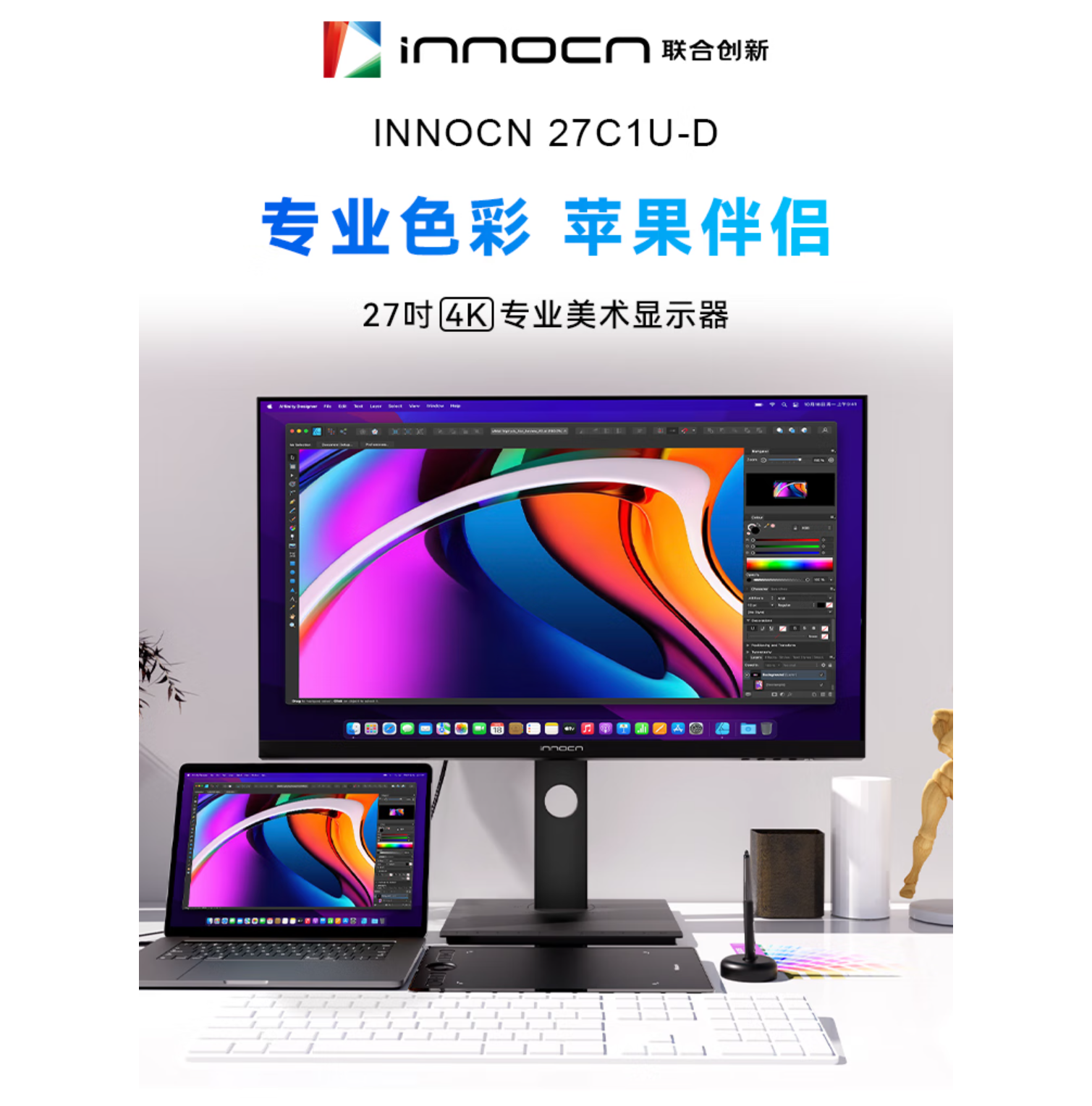
Choices and Comparisons Before Purchase
Before purchasing, I mainly considered the following two monitors:
-
Xiaomi Redmi 27-inch 4K Ultra Clear IPS Technology 100% sRGB HDR400 Type-C Reverse Charging Adjustable Rotating Stand PC Office Monitor: https://u.jd.com/a8zS4JU
-
INNOCN 27-inch 4K Monitor IPS Wide Color Gamut Type-C 65W HDR400 Rotating Adjustable Factory-calibrated Professional Design Office Monitor 27C1U-D: https://item.jd.com/100042713363.html
The configurations of these two monitors are similar, with Redmi priced at around 1499 yuan and Lenovo Innovation at around 1399 yuan. Lenovo Innovation has an additional built-in 3W speaker, but it does not support USB interface.
I have read hundreds of comments on both monitors on JD, and most users reported that Redmi's Type-C interface has electrical noise. In the end, I chose the Lenovo Innovation 27C1U-D, which was priced at 1299 yuan during the event and had good value for money.
Unboxing
The outer packaging of the box was quite heavy.
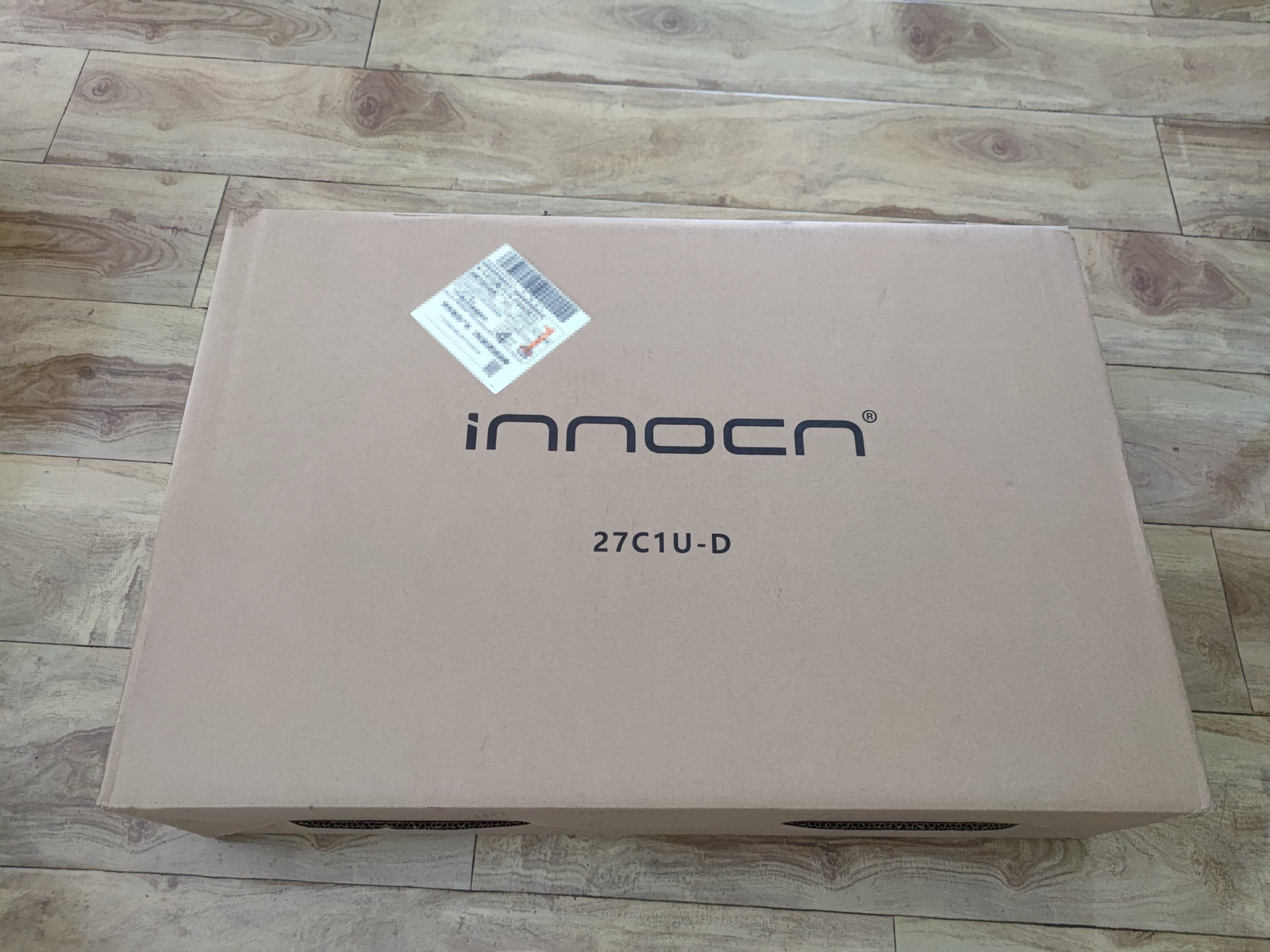
There is also an installation diagram on the top of the box, but it doesn't matter whether you look at it or not. The actual installation is very simple.
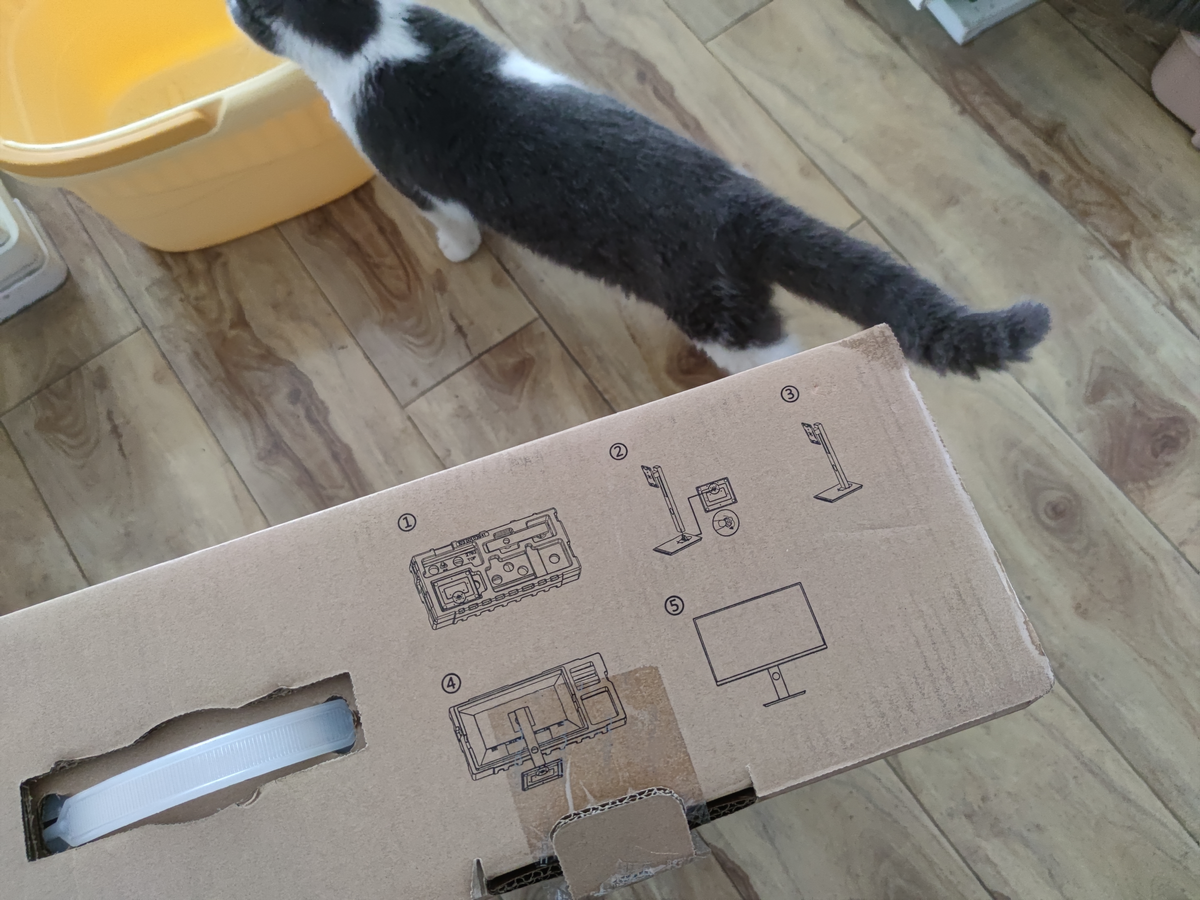
The box has two layers of foam packaging. The first layer contains the color report, manual, monitor stand, and various cables.
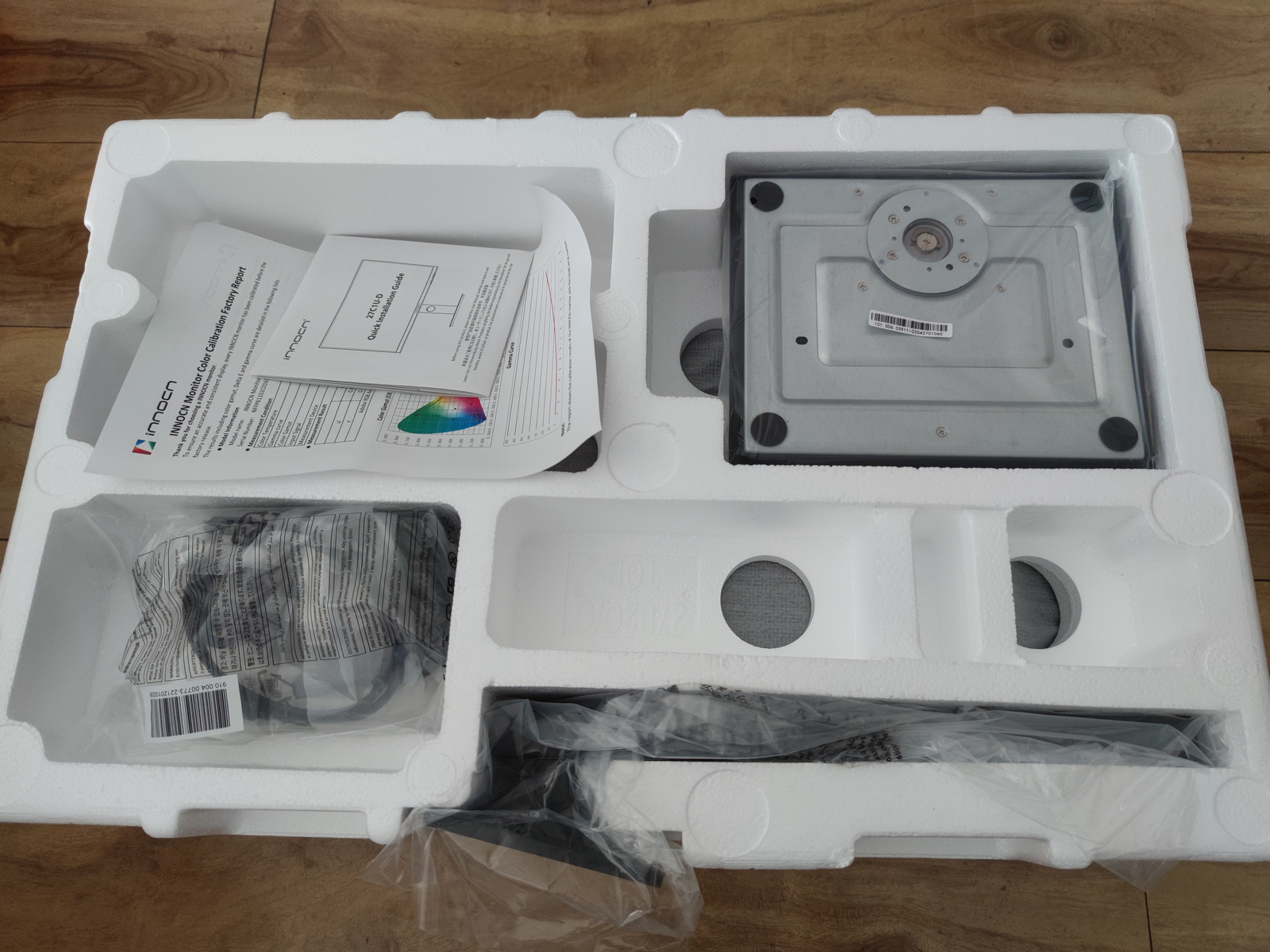
It comes with a power cord, DP cable, and dual Type-C port cable (no HDMI cable).
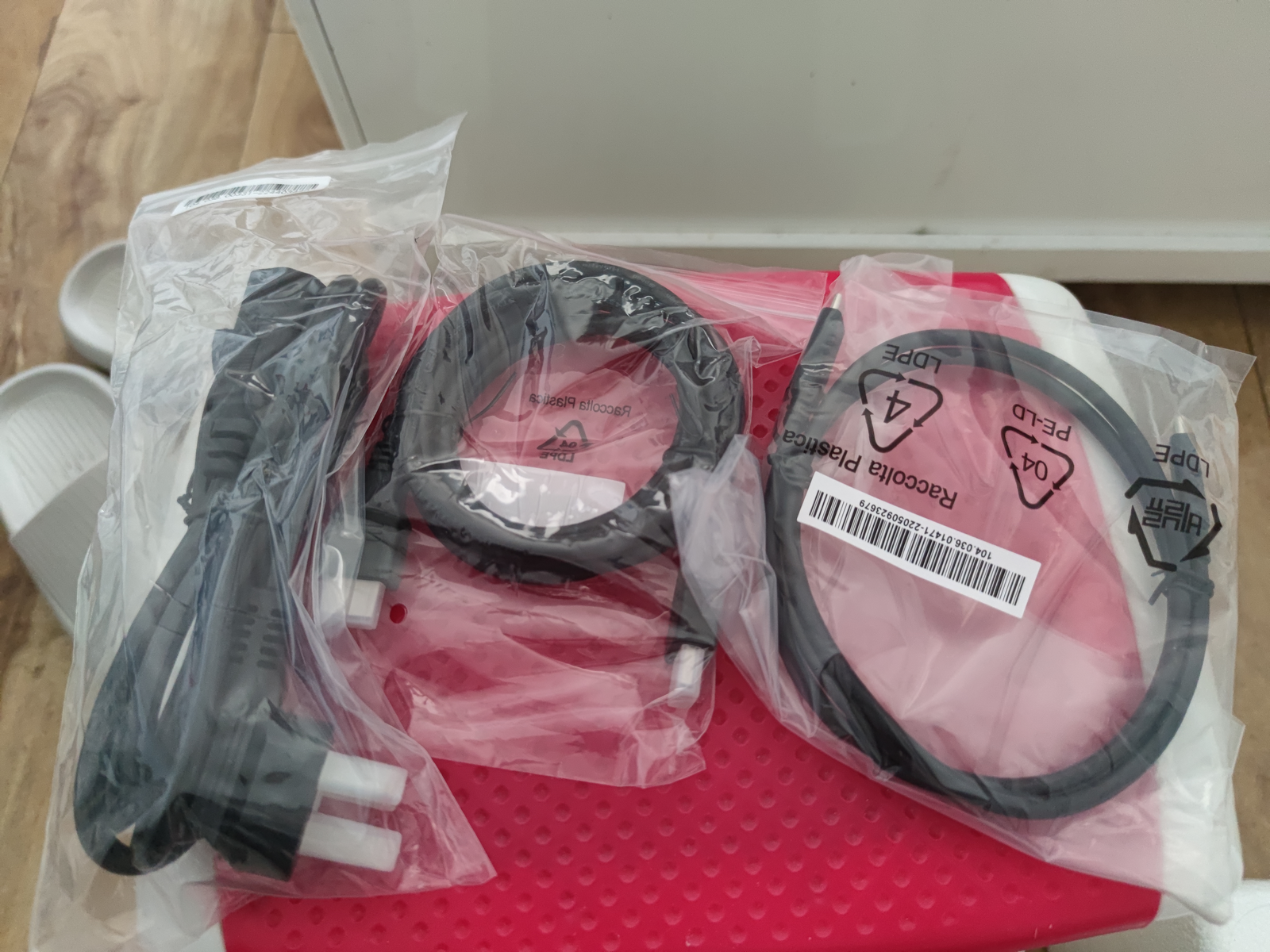
The second layer contains the monitor.
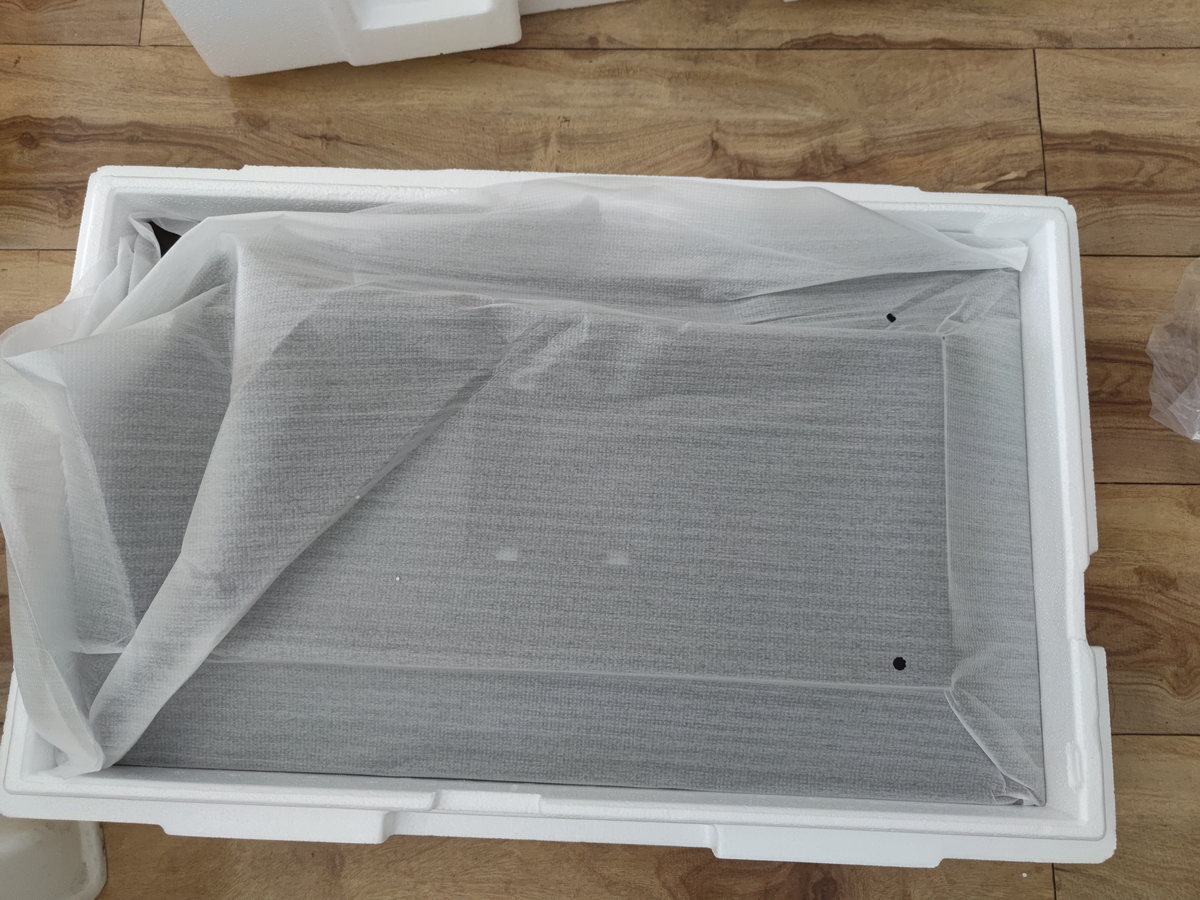
The monitor is 27 inches in size. Can you tell? Haha.
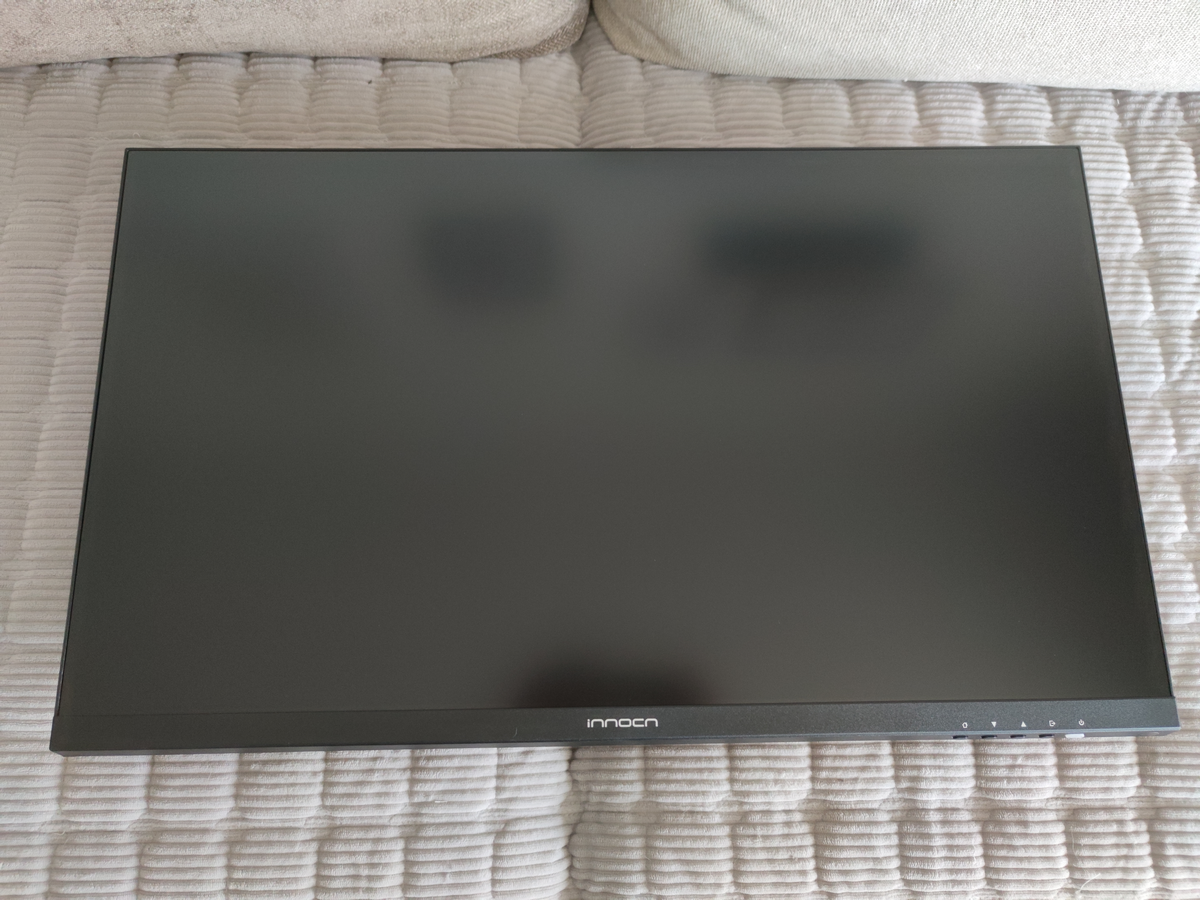
The interface design is at the bottom of the monitor. The interfaces are not abundant, with one HDMI, DP, Type-C, audio, and power interface, but no USB interface.
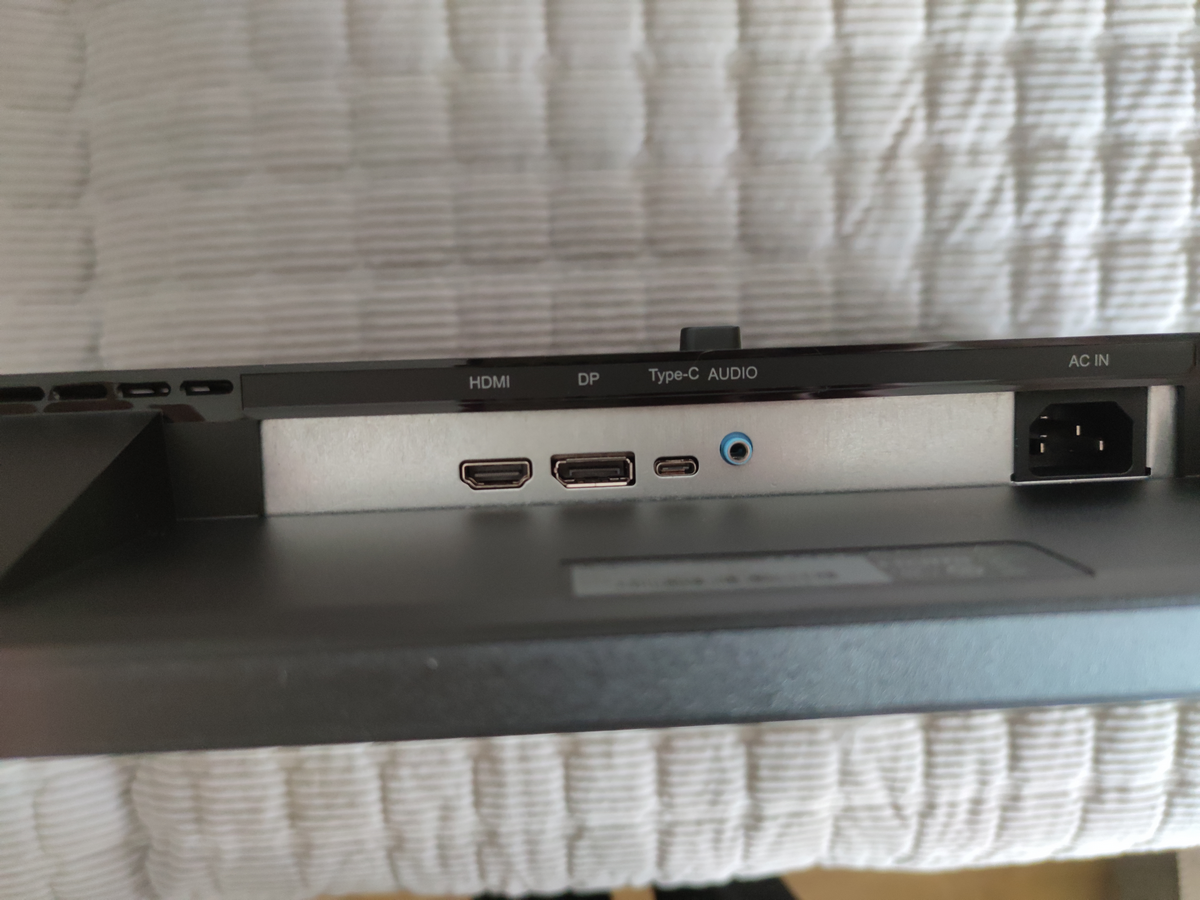
Installation is not difficult. Just snap it on, and take a look at the desktop for the effect.
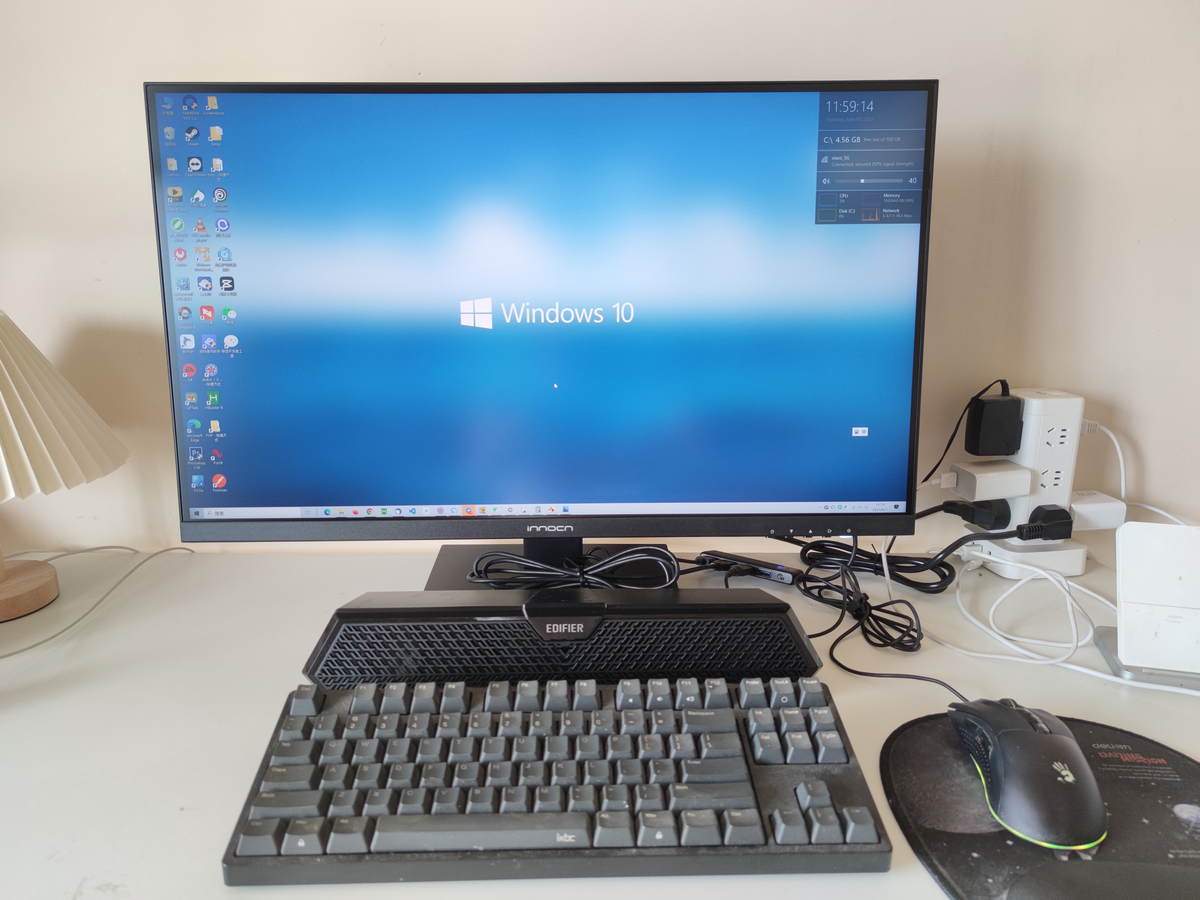
Testing
After installation, I immediately used the screen test tool to check for dead pixels. There were no dead pixels, but there was slight backlight bleed (a common issue with IPS panels), which is barely noticeable and does not affect usage.
Adjusting Parameters
The factory default settings are good, but they seem to be more suitable for macOS. Since I am using Windows 10, the seller recommended changing to sRGB mode and adjusting other parameters according to my needs.
The scaling is set to 150% without HDR mode.
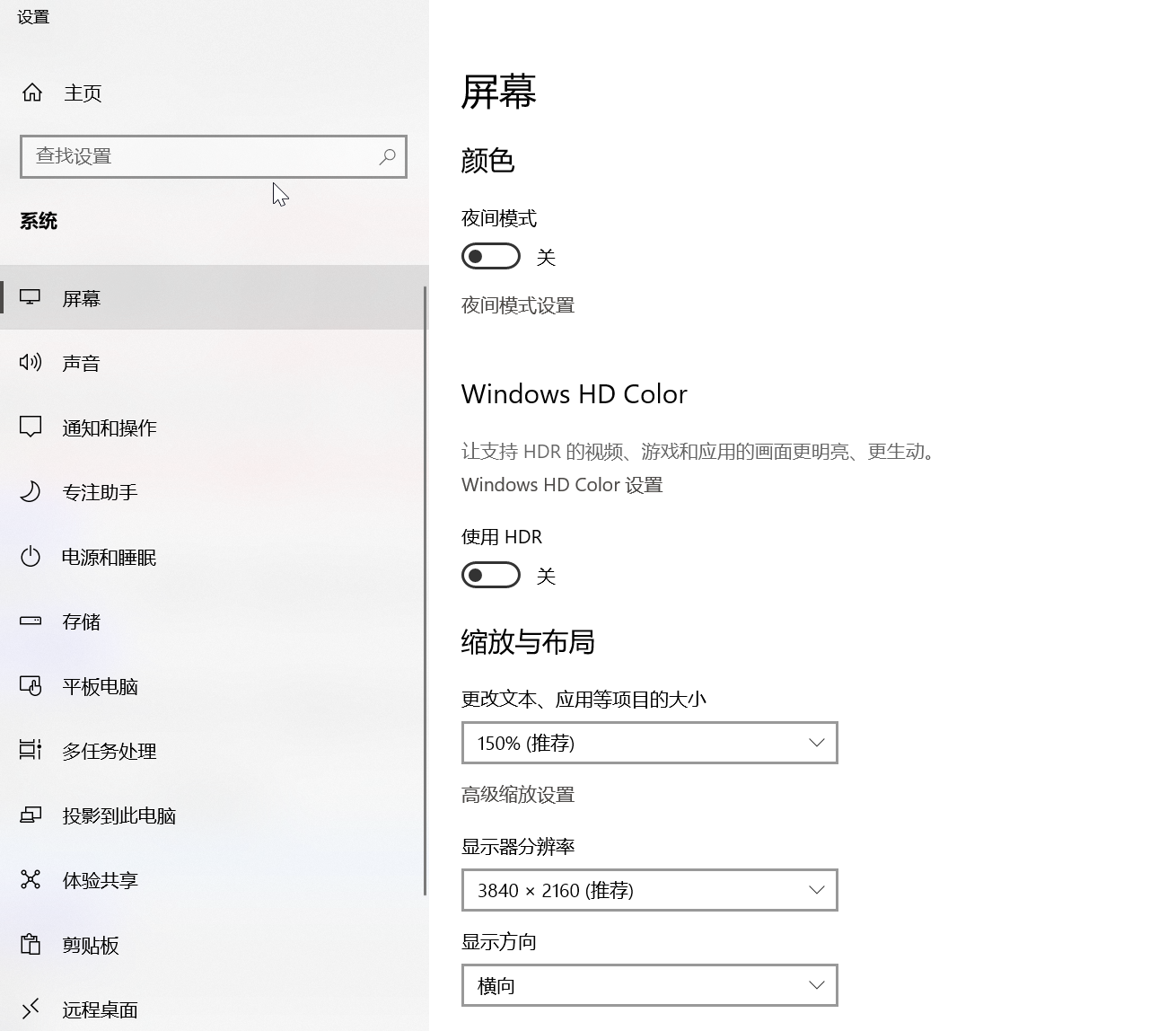
User Experience
Previously, I used a 1080P 144Hz high refresh rate monitor (24 inches), the SANC N50Pro 2. You can see it here: https://blog.xiaoz.org/archives/16407. Now I have switched to the INNOCN 27C1U-D (27 inches). The size has increased, and the display effect has significantly improved.
However, even with the 150% scaling mode enabled, I still feel that the fonts are a bit small, perhaps because I haven't fully adapted yet. In addition, the smoothness feels inferior to my previous SANC N50Pro 2 monitor.
In addition, the INNOCN 27C1U-D has a built-in 3W speaker. I tried it, and the sound quality is average. It doesn't seem to be stereo, and it can only produce a loud sound. However, considering the price, I can't expect too much. Anyway, I mainly use my Mondshine M25, so whether the monitor has speakers doesn't affect me much.
If I think of anything else to mention, I will continue to add it later.
Conclusion
- The INNOCN 27C1U-D has a very high cost performance. It is worth considering as an entry-level 4K monitor, especially with the promotional price of 1299 yuan.
- It supports Type-C 65W interface, but the interfaces are not abundant.
- The monitor can be adjusted at multiple angles.
- The power supply is built-in.
- The back panel is a bit thick, and the workmanship feels average.
- It has a built-in 3W speaker, but the sound quality is average.
Comments

xiaoz
I come from China and I am a freelancer. I specialize in Linux operations, PHP, Golang, and front-end development. I have developed open-source projects such as Zdir, ImgURL, CCAA, and OneNav.
Random article
- Quickly Set Up TCP/HTTP Monitoring with Docker: uptime-kuma
- OneNav Bookmark Management Program 0.9.30 Update Introduction, New Theme: baisuNew
- Integrate ImgURL Image Hosting into Your Website
- Building a Poste Mail Server with Docker
- Limited Time Promotion: HostUS VPS at 15% Off Site-wide
- Manual Installation of Redis 6.0 on CentOS 7
- Baidu also launches intelligent DNS, with setup instructions
- Powerful Video Conversion Tool: Any Video Converter Ultimate
- CCAA Updated to 2.0: One-Click Installation of Aria2 + AriaNg + Filebrowser on Linux for Offline Downloading and Online Streaming
- Deploying Open Source Music Streaming Service Navidrome with Docker: Creating Your Own Cloud Music